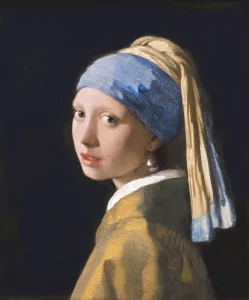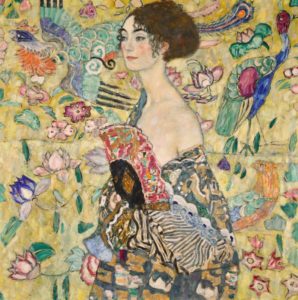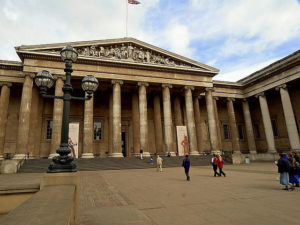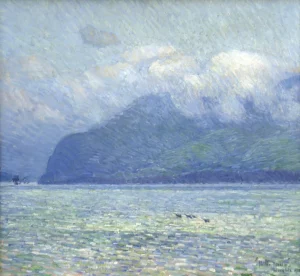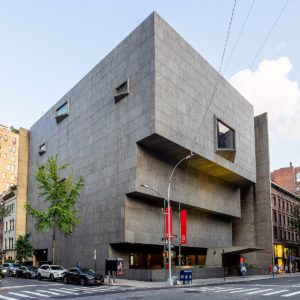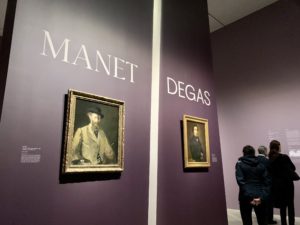With so much that has happened in 2023, it was difficult to pick just ten of the most interesting, most impactful art world moments of the year. But here are my favorites. From big sales and monumental exhibitions to theft and lawsuits…
#1 - February 10, 2023: The Rijksmuseum opens its monumental Vermeer exhibition
From February 10th to June 4th, Amsterdam’s Rijksmuseum hosted the largest-ever exhibition of the works of Johannes Vermeer. Of the thirty-four verified Vermeer paintings, the exhibition contained twenty-eight of them, or about three-quarters of his total existing work. These include some of his most iconic works like Girl with a Pearl Earring, View of Delft, and The Geographer. Nick Glass of CNN called the exhibition “the art world’s coup of the year”. Ticket sales exceeded 200,000 before it even opened. The show was made possible by collaboration between the Rijksmuseum and other major institutions like Washington’s National Gallery and New York’s Metropolitan Museum of Art.
#2 - February 21, 2023: Joan Mitchell vs. Louis Vuitton
The Joan Mitchell Foundation (JMF) sent a cease-and-desist letter to the offices of Louis Vuitton in Paris. This came after the fashion house featured some of Mitchell’s work as a backdrop for their new series of advertisements. The ads featured French actress Léa Seydoux posing with a Louis Vuitton Capucine handbag in front of Mitchell’s La Grande Vallée VII. Louis Vuitton had been hosting an exhibition with Mitchell’s work at the Fondation Louis Vuitton. The JMF has only ever licensed the use of Mitchell’s work for educational purposes like gallery exhibitions, making an effort to keep the artist’s work from being used in commercial settings. According to both the JMF and a Louis Vuitton employee, the fashion house had requested that they use some of Mitchell’s work in the advertising campaign, and, keeping with past precedent, the JMF declined. But Louis Vuitton went on with their plans anyway.
#3 - April 25, 2023: Portrait of Omai by Joshua Reynolds jointly bought by the National Portrait Gallery and Getty Museum
After the British government extended its export bar several times, Sir Joshua Reynolds’s famous Portrait of Omai will remain in Britain (sort of). Initially, museums and collectors across Britain squabbled to come up with the £50 million the government claimed the portrait was worth. London’s National Portrait Gallery came the closest, gathering nearly £25 million by December 2022. But the J. Paul Getty Museum of Los Angeles swooped in and saved the day, offering to match the National Portrait Gallery’s £25 million and buy the painting jointly. The plan is to send the portrait back and forth between the two institutions for six months at a time. But while some are applauding the NPG and the Getty for their new approach to collaboration, some in Britain are upset that Omai will have to spend half the year in an American museum instead of remaining in Britain year-round.
Omai was the first Polynesian person to visit Britain after arriving with Captain James Cook in 1774. Typical of the Grand Manner portraiture Reynolds preferred, Omai stands resplendent in white robes and a turban, posing in a style similar to the famous Apollo Belvedere statue now in the Vatican Museums. The portrait was last sold at Sotheby’s London in 2001 for a hammer price of £9.3 million (or $13.1 million), making it the second most-valuable painting by a British artist at the time. The NPG acquired the portrait just in time to have it on display for its June 22nd reopening after a three-year closure due to the pandemic and extensive renovations.
#4 - May 18, 2023: Warhol Foundation v. Goldsmith decision
In a 7-2 decision, the US Supreme Court decided that the Andy Warhol Foundation’s (AWF) licensing of Orange Prince to Condé Nast in 2016 does not qualify as fair use. Therefore, it violates the copyright of Lynn Goldsmith’s original photograph upon which the Warhol is based. Goldsmith first took the photograph in 1981, and she licensed it to Vanity Fair as an artist’s reference for an original illustration. They failed to tell her that Andy Warhol was the artist they contracted, who went and created a series of prints rather than the one illustration he was asked to do. After Prince’s death in 2016, the AWF licensed Condé Nast to use Orange Prince on the front cover of a commemorative edition. After Goldsmith alleged that this licensing violated her photo’s copyright, the AWF sued her.
Justice Sonia Sotomayor, writing for the majority, found that the Warhol print and the Goldsmith photograph both serve the same purpose, and it is a commercial purpose at that. Because the print’s use by the AWF was for commercial licensing, the court decided that AWF’s actions were not fair use and therefore violated Goldsmith’s copyright. Goldsmith is not alleging that all of the works in Warhol’s Prince Series are an infringement on her copyright, only the specific use of Orange Prince on the cover of Condé Nast.
#5 - June 28, 2023: Gustav Klimt’s Lady with a Fan becomes the most expensive work ever sold in Europe
On Tuesday, June 27th, Sotheby’s London hosted its Modern & Contemporary evening sale. News outlets had been reporting on this particular sale for months, mainly because of a single lot: Gustav Klimt’s portrait Lady with a Fan. The portrait is one of Klimt’s last masterworks, with it being discovered on his easel at the time of his death in 1918. It last sold at Sotheby’s New York in 1994 for $10.6M hammer, setting Klimt’s auction record. This time, the Klimt exceeded its £65M estimate, achieving £74 million (or $94.36 million). Lady with a Fan is now the most expensive painting ever sold in Europe. Previously this record belonged to René Magritte’s L’empire des lumières, which sold in March 2022 at Sotheby’s London for £51.5 million (or $6.87 million), It also set Klimt’s new auction record, beating out the painting Birch Forest, which sold for $91 million hammer at Christie’s New York as part of the Paul Allen collection last November.
#6 - August 14, 2023: OMA sues former director Aaron de Groft
Though the Orlando Basquiats Controversy began in mid-2022, everything came to a head this past August when the Orlando Museum of Art sued its former director Aaron de Groft. The museum administration alleges fraud, breach of contract, breach of fiduciary duty, aiding and abetting, and conspiracy. De Groft is accused of taking advantage of the museum’s reputation to give the fake Basquiat paintings positive attributions and facilitate their future sale, for which the owners promised him part of the money. The lawsuit also alleges that De Groft did the same thing while he was director of the Muscarelle Museum of Art at the College of William and Mary. Texts and emails indicate that he was planning on pulling a similar scam with a painting allegedly by Jackson Pollock known as Pink Spring. Later in November, De Groft hit back with a countersuit of his own, claiming that he was terminated without cause and that could prove the Basquiats’ authenticity.
#7 - August 16, 2023: The British Museum Theft
When the British Museum announced they fired an employee for stealing and damaging several collection items, very few people were expecting that employee to be an esteemed museum curator. Peter John Higgs, the British Museum’s head curator of Greek and Roman art, is considered one of Britain’s foremost authorities on Mediterranean antiquities. Evidence suggests that he took the stolen items from the museum’s storerooms over several years. Some he sold on eBay, while he removed the precious stones and gold mounts from others to sell for scrap. The museum estimates that upwards of 2,000 items were stolen or damaged, some of which have already been recovered. Museum director Hartwig Fischer planned on stepping down from his post next year, but Higgs’s theft seems to have hastened his departure. The deputy director, Jonathan Williams, left the museum several months later.
The situation’s irony was not lost on some. Many objects kept at the British Museum were stolen and plundered from warzones and Britain’s colonial holdings over the centuries. So, the fact that the museum administration became so incensed by someone stealing from them is a little amusing. Many have indicated that the Higgs theft might be the straw that breaks the museum administration’s back on the repatriation issue. One of the few remaining arguments in favor of keeping the Parthenon Marbles or the Benin Bronzes in London is that they are far safer and better cared for at the British Museum than in their countries of origin. But this massive security breach exposes what some commentators say is a flaw in museum policy. Only about half of the items kept at the British Museum are viewable in its online catalogue. Many claim that the museum has intentionally restricted public knowledge about its collections, that way restitution claims are harder to carry out. And it was the museum’s secretive institutional culture that allowed Higgs to get away with his thefts for so long. After Fischer stepped down, the administration announced that the museum would overhaul its efforts to properly catalogue all of its inventory so that a similar theft could never happen again.
#8 - October 24, 2023: Jussi Pylkkänen Leaves Christie’s
After thirty-eight years with Christie’s, the auction house’s global president Jussi Pylkkänen will step down next year. Even before becoming Christie’s global president in 2014, he was one of the company’s most well-known figures. A native of Finland, Pylkkänen studied art at Oxford University and joined Christie’s in the 1980s as an expert in twentieth-century art. In 1995, Christie’s named him director of its Impressionist and Modern Art department, a position he held for ten years. He served another ten years as president of the company’s Europe, Middle East, and Russia division.
Whenever Pylkkänen was at Christie’s podium, you knew it was a sale worth watching. He served as auctioneer in selling some of the world’s most valuable paintings, like Da Vinci’s Salvator Mundi at a 2017 Post-War & Contemporary sale and Warhol’s Shot Sage Blue Marilyn at a 20th Century evening sale in 2022. He was also the auctioneer for the sale of some of the most iconic private collections ever to cross the block at Christie’s, including those of Paul Allen, Elizabeth Taylor, and David & Peggy Rockefeller. Pylkkänen will serve as auctioneer for the last time on December 7th at the London Old Masters evening sale. Christie’s CEO Guillaume Cerutti called Pylkkänen “a respected art specialist, a remarkable business getter and one of our best auctioneers.” He is widely credited with helping bring new buyers and sellers to Christie’s, earning its place as the top auction house in the world. He also helped the company achieve its first billion-dollar week in 2015. In the future, Pylkkänen plans on working as an independent consultant and advisor. Though he won’t be leaving the field entirely, his absence will be felt across the art world. His expertise, business acumen, and charm at the podium are what made people want to go to Christie’s.
#9 - November 8 - 9, 2023: Biggest Sales of the Year
On November 8th and 9th, Christie’s and Sotheby’s held back-to-back sales that skyrocketed to the top as the biggest sales of the year. First, Sotheby’s New York hosted the sale of the Emily Fisher Landau Collection. Until her death this past March, Landau had collected dozens of modern masterpieces by artists like Georgia O’Keefe, Robert Rauschenberg, and Mark Rothko, even getting Andy Warhol to paint her portrait in 1982. The collection’s top sellers included the most valuable painting of the year, Picasso’s Femme à la montre, which sold for $121 million (or $139.36 million w/p). Its price also made it the second most expensive Picasso painting ever sold at auction. The sale as a whole brought in $351.6 million (or $406.4 million w/p), making it the most expensive sale of the year… at least for 24 hours.
The very next day, however, Christie’s just had to do one better. Its 20th Century evening sale turned out even bigger and better. Though nothing could beat the Landau Collection’s Picasso portrait, the 20th Century sale featured half of the top ten lots of the year, including Monet’s Le bassin aux nymphéas, Francis Bacon’s Figure in Movement, Recollections of a Visit to Leningrad by Richard Diebenkorn, Untitled (Yellow, Orange, Yellow, Light, Orange) by Mark Rothko, and Picasso’s Femme endormie. With about twenty fewer lots than the Landau sale, Christie’s 20th Century made 150% more, bringing in $554.6 million (or $640.8 million w/p), making it the year’s number one sale.
#10 - December 19, 2023: BP's £50 million donation to the British Museum
Earlier in June, it seemed like after 27 years of partnership, the British Museum was finally set to cut ties with British Petroleum. Neither organization announced any plans of renewing or renegotiating their five-year sponsorship deal which expired in February. However, after a year of scandals, the British Museum's trustees finished the year with a £50 million donation from the petroleum giant to fund future renovations. The British Museum is one of the last, and by far the largest, of Britain’s cultural institutions to maintain ties with oil and gas companies as sponsors. The Tate Galleries, the National Galleries of Scotland, the National Portrait Gallery, and the Royal Opera House have all cut ties with BP. BP's donation is the largest ever towards the British cultural sector and will go towards refurbishing the museum's western galleries, which contain its Greco-Roman and Egyptian collections.
Honorable Mentions
February 9, 2023: Valparaiso University Deaccession Scandal
The Brauer Museum of Art at Indiana’s Valparaiso University came to the attention of many after the school administration announced its decision to deaccession works by several great American artists to fund new dorms. This was part of university president José Padilla’s five-year plan to attract and retain more students. These paintings included The Silver Veil and the Golden Gate by Childe Hassam (est. $3.5 million), Mountain Landscape by Frederic Edwin Church (est. $2 million), and, one of the museum’s crown jewels, Rust Red Hills by Georgia O’Keeffe (est. $15 million). This story got even more coverage after Richard Brauer, the museum’s founding director and namesake, threatened to revoke his permission for the museum to use his name. He referred to the deaccession as “utterly disgraceful, irreparably existentially diminishing, unethical and seemingly unnecessary”. The American Alliance of Museum Directors, the American Alliance of Museums, the Association of Academic Museums & Galleries, and the Association of Art Museum Curators all opposed the deaccession plan, issuing a joint statement.
Thankfully, Padilla’s plan received some effective pushback. In March, Valparaiso’s Faculty Senate, representing faculty members from all the school’s colleges, voted 13 to 6 for the administration to drop the deaccession plan and look for alternative sources of funding. Valparaiso’s administration was stalled yet again with a lawsuit in April. Brauer and another former faculty member sued Padilla and the school to prevent the deaccession, since any sale would go against the intentions of the original donor. The paintings are part of a trust that the donor Percy Sloan set up in 1953. The plaintiffs allege that the student body and the public “will suffer irreparable injury if Valparaiso University violates the donor’s intent and liquidates assets of the trust”. The lawsuit against the university was dismissed in October, but the Indiana Attorney General Todd Rokita still has to decide on the sale’s legality.
June 1, 2023: Sotheby’s announces plans to buy the Breuer Building
Sotheby’s has bought Manhattan’s iconic Breuer Building for $100 million to use as their new flagship location. The Breuer Building, located at 945 Madison Avenue, was built between 1964 and 1966 based on brutalist designs by Marcel Breuer. It was originally built as the home of the Whitney Museum of American Art. When the Whitney moved to its now-current location in Manhattan’s Meatpacking District in 2014, other organizations leased the building, including the Metropolitan Museum of Art and, currently, the Frick Museum. The move to the Breuer will place Sotheby’s in a more central location since the current York Avenue headquarters may seem a little out-of-the-way for some visitors. This will bring Sotheby’s closer to the other major Manhattan museums and galleries, as well as allow more visitors to view the works featured in the upcoming sales free of charge.
September 24, 2023: Manet/Degas at the Met
On September 24th, the Manet/Degas exhibition at New York’s Metropolitan Museum of Art opened to the public. Many of the over 160 works on display are on loan from the Musée d’Orsay and have never been exhibited outside of France, including Manet’s masterwork Olympia. The exhibition presented the two artists in the classic compare-and-contrast method, highlighting the similarities between the two men as the eldest sons of upper-middle-class French families. They were born two years apart, and they abandoned their legal studies in favor of artistic pursuits. But while the two had many similarities in their background, the exhibition also plainly highlights the dichotomies they represented. Manet was personally more expressive and outgoing, while Degas was reserved and conservative. But while this dichotomy seems very apparent in their personal lives, almost the opposite is seen in their artistic output.
The exhibition focused on how Manet was more of a free-spirit in his personal life, yet was more traditional in his professional life. He maintained his faith in the Salon long after many of his colleagues had abandoned it in favor of independent exhibitions. Exhibition curators implied that Manet’s relationship with the Salon influenced Degas and his artistic aspirations, that Manet and his occasional Salon success like with Olympia overshadowed the work Degas submitted. This may have been the reason Degas gave up on traditional, more accepted forms of painting altogether. But though they experienced periods of rivalry, the Met curators also highlighted how after Manet’s death, Degas became one of the most prominent figures who spearheaded efforts to help commemorate his life and work. The Manet/Degas exhibition at the Met is not the first time anyone has examined dialogues between artists across space and time. But this is one of the first times that these two artists, great friends, and occasional rivals, have been studied together in a curated exhibition setting.

